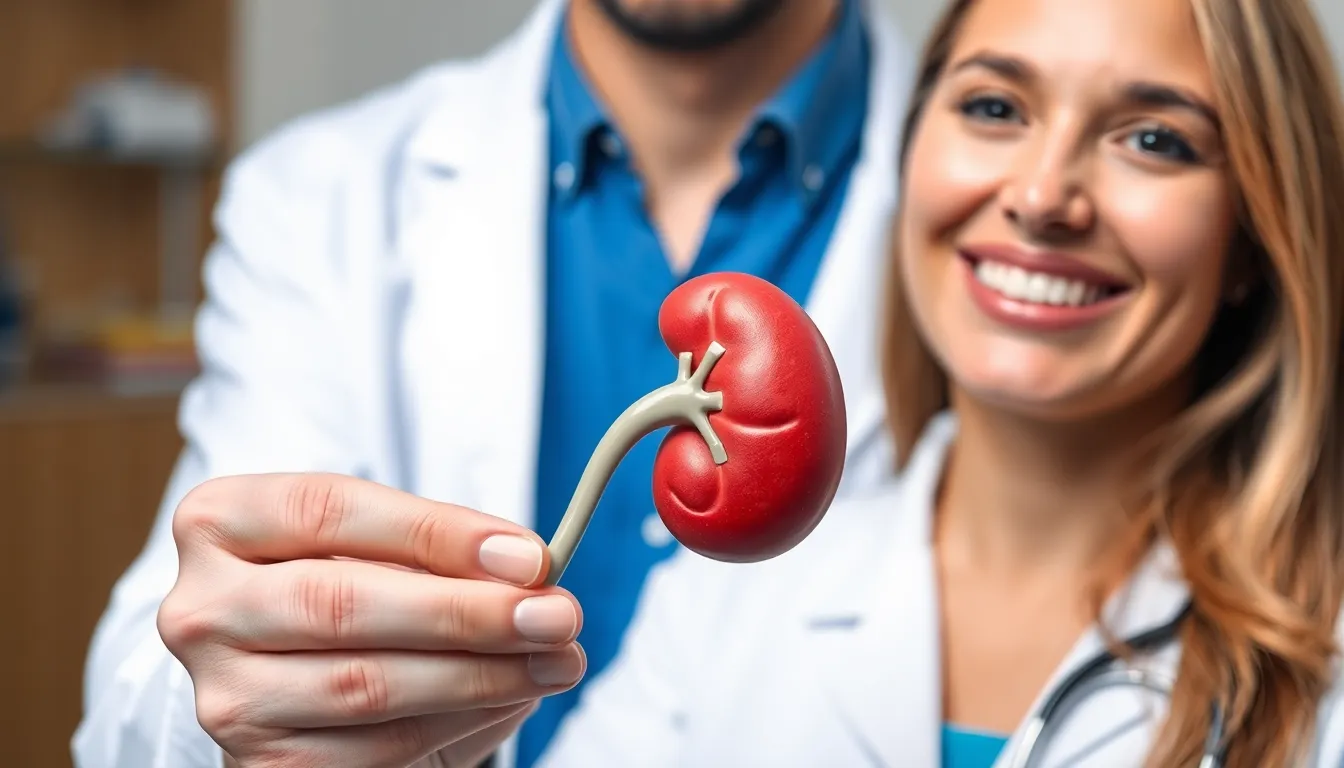Table of Contents
ToggleJardiance, a medication primarily used to manage type 2 diabetes, has garnered attention for its potential side effects, particularly weight loss. As more individuals seek effective solutions for managing their weight alongside diabetes, the question arises: can Jardiance truly help shed those extra pounds?
Research suggests that Jardiance may indeed contribute to weight loss for some users. By promoting glucose excretion through urine, it not only helps regulate blood sugar levels but can also lead to a decrease in body weight. This dual benefit makes it a topic of interest for those navigating the challenges of diabetes and weight management. Understanding how Jardiance works and its implications for weight loss can empower individuals to make informed decisions about their health journey.
Overview of Jardiance
Jardiance, known generically as empagliflozin, belongs to the class of medications called sodium-glucose cotransporter 2 (SGLT2) inhibitors. It primarily treats type 2 diabetes by lowering blood sugar levels. Jardiance functions by preventing the kidneys from reabsorbing glucose back into the bloodstream, leading to increased glucose excretion through urine.
Research demonstrates that Jardiance offers additional benefits beyond glucose control. Studies show that patients taking Jardiance often experience weight loss. This occurs because the additional glucose excretion helps reduce overall caloric intake. Clinical trials indicated an average weight reduction of 3 to 5 percent among individuals using Jardiance along with conventional diabetes treatment.
Furthermore, Jardiance shows promise in reducing the risk of cardiovascular events in patients with type 2 diabetes and established cardiovascular disease. These cardiovascular benefits, paired with weight loss, make Jardiance a significant option for managing diabetes and promoting heart health.
Mechanism of Action

Jardiance, or empagliflozin, functions through its unique actions that promote both glucose control and weight loss. Understanding how it operates reveals its therapeutic benefits in managing type 2 diabetes.
How Jardiance Works
Jardiance inhibits the sodium-glucose cotransporter 2 (SGLT2) in the kidneys. This inhibition reduces the reabsorption of glucose, resulting in increased glucose excretion via urine. As glucose leaves the body, it leads to lower blood sugar levels. The calorie loss from excretion contributes to weight reduction, with studies showing an average weight decrease between 3 to 5 percent among users. This dual action aids in improving glycemic control while simultaneously promoting weight loss.
Impact on Glucose Levels
Jardiance lowers blood glucose levels effectively. By facilitating urinary glucose excretion, it creates a prompt decrease in plasma glucose concentrations. This reduction helps individuals achieve better glycemic control, essential for diabetes management. Studies demonstrate that routine use of Jardiance correlates with significant reductions in hemoglobin A1c (HbA1c) levels, crucial in evaluating long-term diabetes management. The improved glucose regulation not only benefits weight management but also supports overall metabolic health.
Clinical Studies on Weight Loss
Research on Jardiance (empagliflozin) demonstrates its potential for promoting weight loss alongside its primary use for managing type 2 diabetes. Various clinical studies highlight significant findings related to weight reduction.
Key Findings
- Studies indicate that patients using Jardiance experience an average weight loss of 3 to 5 percent over six months.
- A 2018 study published in The Lancet showed that participants on Jardiance lost approximately 4.5 pounds (2 kg) compared to a placebo group.
- Research data suggest this weight loss results from enhanced glucose excretion and increased caloric loss through urine.
- In clinical trials, patients maintaining treatment for 52 weeks recorded sustained weight loss, indicating long-term efficacy.
Population Considerations
- Several studies focused on specific demographic groups, revealing nuances in weight loss benefits.
- Individuals with a higher body mass index (BMI) reported more pronounced weight loss results compared to those with lower BMIs.
- Age and gender also influenced weight loss outcomes, with older adults experiencing a slightly higher percentage of weight loss.
- Ethnic backgrounds demonstrated variations in weight response, highlighting the importance of personalized treatment approaches.
Research supports the role of Jardiance in weight management within specific populations, enhancing its appeal beyond diabetes control.
Potential Side Effects
Jardiance, like any medication, may lead to side effects. Understanding both common and rare reactions helps users manage their experience effectively.
Common Side Effects
Common side effects associated with Jardiance include:
- Urinary Tract Infections: Increased glucose in urine may heighten the risk of infections.
- Genital Yeast Infections: Nutrient-rich urine creates a favorable environment for yeast growth.
- Dehydration Symptoms: Users may experience increased thirst, dry mouth, or dizziness due to fluid loss.
- Digestive Issues: Possible symptoms include nausea, vomiting, or changes in appetite.
These side effects typically diminish over time, but users should consult their healthcare provider if symptoms persist.
Rare but Serious Reactions
Serious side effects, although infrequent, may occur with Jardiance use. These include:
- Ketoacidosis: A rare condition where the body produces high levels of ketones, leading to nausea, vomiting, and abdominal pain.
- Kidney Issues: Significant drops in kidney function can arise, particularly in patients with pre-existing kidney disease.
- Severe Allergic Reactions: Symptoms may include swelling, difficulty breathing, or rash.
Users experiencing these serious reactions must seek immediate medical attention. Regular monitoring and communication with healthcare providers can help mitigate risks.
User Experiences and Testimonials
Users’ experiences with Jardiance highlight varying outcomes, with many reporting weight loss as a positive effect. While individual results may differ, personal testimonials provide insight into the medication’s impacts.
Positive Outcomes
Many users report favorable weight loss experiences while taking Jardiance. Several individuals indicate achieving a weight reduction of 5 to 10 pounds (2.3 to 4.5 kg) within the first few months. A common theme among testimonials involves improved energy levels and enhanced overall well-being. Users also note better dietary adherence due to reduced cravings for sugary foods and improved glycemic control. Case studies showcase patients maintaining weight loss for over a year, reinforcing the medication’s effectiveness beyond short-term results.
Challenges Faced
While numerous positive experiences exist, some users encounter challenges during treatment. Reports of side effects such as urinary tract infections and dehydration have surfaced, impacting adherence to the medication. Some individuals also experience fluctuations in blood sugar levels, complicating diabetes management. A few users express frustration with weight stabilization after initial losses, highlighting the need for continued lifestyle modifications alongside medication. Overall, while challenges exist, the majority of testimonials emphasize the benefits of Jardiance in managing both diabetes and weight.
Conclusion
Jardiance offers a promising option for individuals managing type 2 diabetes while also seeking weight loss. Its unique mechanism not only regulates blood sugar levels but also facilitates a modest reduction in body weight. With an average weight loss of 3 to 5 percent observed in users, it proves effective for many.
While the medication comes with potential side effects, the overall benefits in glycemic control and weight management can significantly enhance a person’s quality of life. Personal experiences highlight positive outcomes, reinforcing Jardiance’s role in a comprehensive diabetes care plan. As always, consulting with a healthcare provider remains essential for tailored treatment and monitoring.




